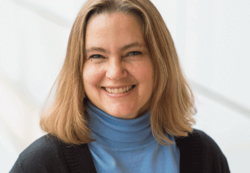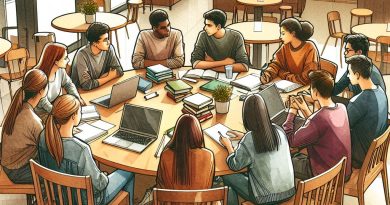Faculty Spotlight on Dual Modality – Rebecca Shakespeare
by Heather Dwyer, Assistant Director CELT
Faculty experiences in Fall 2020 proved that teaching in dual modality is a lot more complicated than it seems at first glance. Juggling between face-to-face students and those joining remotely requires significant extra cognitive load and can easily distract from teaching the subject matter at hand. Rebecca Shakespeare, Lecturer in the Department of Urban and Environmental Policy and Planning, encountered the challenge of teaching a course that was primarily conducted remotely but also offered the opportunity for students to gather in person. To execute it, she designed a sequence of course meetings that allowed students to interact in smaller groups.
You are invited to watch an interview with Rebecca where she describes this approach, or read on for her paraphrased responses to the questions that were posed in the interview.
Can you introduce yourself and your course?
I’m Rebecca Shakespeare, a lecturer in the Department of Urban and Environmental Policy and Planning. One of the courses I teach is called Cities in Space, Place, and Time, a core course for incoming Masters students that I co-instruct with Jon Witten. There are almost 60 students, as well as two instructors, so there was no way we could all be in the same physical place at once, given COVID.
What was the goal of pursuing a dual modality experience for your students? What were your constraints?
Because these students just started a Masters degree, we wanted them to be able to get to know the program that they’d be participating in for the next two years and to establish some connection and community with their instructors and peers. I was available to come to campus to teach a couple sessions in person, however, there wasn’t a physical space on campus that allowed all of us be there at the same time.
How did you begin to resolve this challenge?
The first thing I did was call CELT, because this was a complicated problem and I wasn’t sure what would work best. Together, we thought through the possibility of having an instructor lead a class with some students showing up face-to-face and others joining remotely at the same time. It’s a discussion heavy class, and trying to pipe up in that format would be really hard. We also talked about approaches for leading in-person classes with masks and social distancing present. What we came up with was dividing the class into sections. We could only have up to 20 people in a classroom, so we broke the class into smaller sections that experienced different class sessions simultaneously. I’ll show you visually.

Here is the sequence for how a normal class would move through the days of the week. Everyone would move together as a group. They would all together go to the Monday session and all together go to the Wednesday session:
The premise of our solution involved breaking our class into smaller groups where the instructor led one section in person synchronously, and the other section was not instructor led (e.g., student-led book club session, independent reading and writing, watching a video and reflecting in writing – it could be asynchronous or synchronous). So in this case, depending on their section, the students go to the appropriate Monday session, and then they switch on Wednesday. The means that by the end of the week, all students will have been to the instructor-led session (which was the same on Monday and Wednesday) and all students will have been to the non-instructor-led session:
Also, we had some students who had constraints and couldn’t be on campus physically. So in this case, our Wednesday instructor-led session was virtual rather than in-person. In the figure, remote students are represented in red. Again, they all get the same basic experience, but the order and modality are varied:
What I just described is a simplified version of what we actually executed because our course was large.
We took advantage of the fact that we had two co-instructors and broke the students into three groups, rather than two, and we surveyed the students to find that we needed to have about two in person sessions for all the students who wanted the opportunity to be in person. This resulted in a three-session series:

Though this seems confusing, from the student perspective, your schedule is really just going to three different classes in a row. Overall, students were not confused by this and didn’t have much difficulty identifying their personal schedule. Ultimately, this approach allowed each co-instructor to focus on their areas of expertise, and students gained the opportunity for self-directed learning during the non-instructor-led sessions.
What were some indicators that suggested this approach was working?
Students sent emails thanking us for creating the chance to learn in person, which indicated that for some students, the face-to-face time was valuable to them. And as the semester progressed, my co-instructor and I came to recognize how useful it was to be in smaller sections. In Zoom, 64 faces on a screen is a lot. Breaking students into smaller groups gave us a chance to know students better. Also, we surveyed students afterward and found that they enjoyed the opportunity to go deeper with a smaller group of peers for a longer period of time than a typical breakout would allow.
What are your takeaways from this experience?
I would use the approach of breaking the class into smaller sections that rotated through a series of sessions again, even if we weren’t in a pandemic. The smaller class meetings helped us get to know individual students during the instructor-led sessions, and students who were in the non-instructor led sessions still engaged in a valuable activity to advance their knowledge and skills.
See Also








